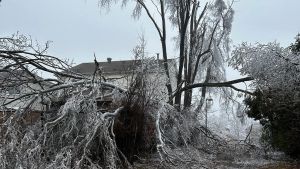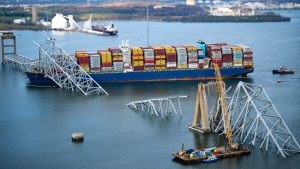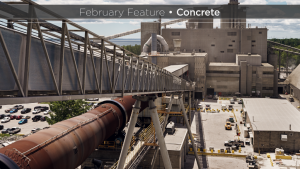On Aug. 26, 2021, an explosion in the town of Wheatley, Ont. occurred, significantly damaging buildings and leaving many injured. With the town evacuated, experts tried to figure out the cause. The first and second articles in this Daily Commercial News three-part series took a look at what has been done since the catastrophe. The final article looks at the costs and examples of legislation from other provinces that may provide insight so that this kind of disaster doesn’t happen again.
To date, the emergency response, investigation and remediation of the Aug. 26, 2021 explosion in Wheatley, Ont. has cost Chatham-Kent nearly $9 million, with the province having announced intentions to pick up nearly $6 million of the immediate costs, says Don Shropshire, who leads the project for the municipality.
But those immediate costs don’t take in all the time local municipal staff have spent on the situation and could end up being the tip of the iceberg if a class action lawsuit against the municipality and the province goes ahead, the recently retired municipal CAO says.
Shropshire recognizes the situation has raised questions about accountability and how to prevent such an incident from happening again.
He says he has discussed with the province the need for legislation that ensures new development takes old gas and oil wells into account.
“That’s the sort of thing that I think we’d have to work with the provincial government or senior levels of government to develop the corporate (municipal) guidelines or legislation,” he says. “As far as we’re aware, that would be a provincial government responsibility.”
Ryan Doull, a well-integrity specialist based in Alberta who briefly worked on the Wheatley project, says several factors heighten the chances of such an explosion happening again in Ontario compared to his province.
He explains Ontario legislation “did not evolve as quickly over time” as Alberta legislation did because the eastern province’s industry is much smaller. Because of the age of Ontario’s industry, many aging well structures exist. Many of these are close to the province’s large population in the south. Some are covered by surface infrastructure as they were in Wheatley.
Alberta, he says, has introduced measures to ensure public safety. For instance, the Alberta Energy Regulator holds the licensee liable for care and custody of the well throughout its life. If a well leaks or its integrity status is unknown, licensees must perform integrity tests. Wells that fail must be investigated and remediated.
Moreover, the Alberta Orphan Well Association assumes responsibility for orphaned wells — those abandoned because the company has gone defunct.
“They have to follow the same regulations” as any other licensee, Doull explains.
In 2021, the province’s energy regulator also announced new rules requiring companies to annually set aside money to clean up old wells and pipelines.
Controls that ensure developers consider wells during development have also been in place for nearly a decade. These include minimum setbacks between abandoned wells and surface structures and a requirement for applicants of subdivision or development permits to identify and address the management of abandoned wells during the planning process.
In Ontario, “there is no legislation” compelling developers to consider wells on their properties before building, says Shropshire by way of contrast.
“If you had a well on your property and you came in and wanted a building permit, there’s no legislative authority that the province, or the municipality has to say you can’t build one.”
He’d like to see property owners register on title any decommissioned gas or oil wells and the steps taken to plug them. He’d also like to see planning setbacks established.
Lines of authority in responding to such emergencies need clarification, he adds.
“The municipality, we do have a direct responsibility to safeguard residents,” he explains, “but given the expertise that we have as a municipal government, something like the expertise dealing with gas wells, that’s not a core competency for the municipality.”
That expertise lies in senior levels of government as does financial support.
Anita Tamrazi, a spokesperson for the Ontario Ministry of Natural Resources and Forestry, did not respond to a question posed by the Daily Commercial News of whether the province had plans to revise or introduce new requirements.
However, she says by email the ministry “does not have an approval role with respect to applications under the Planning Act. However, any decisions by the municipality to proceed with development within proximity to petroleum or salt solution mining wells, or former operations, should consider accessibility to the well in case work on the well is required in future.”
It’s up to landlords “and others to identify petroleum wells including those wells for which no records exist,” she adds.
Provincial legislation designates responsibility for a well to “the licence holder, operator, or person responsible for the control, management or operation of a well,” she writes.
If such a person does not exist, responsibility falls to the landowner.
Tamrazi lists the technical assistance the province has provided Chatham-Kent and notes the ministry operates an abandoned works program to plug oil and gas wells drilled before 1963. The program has plugged 380 wells since 2005.
The province is still awaiting a response to its 2020 request to the federal government for inclusion in a $1.7 billion program to clean up orphaned and inactive oil and gas wells, she adds. The program currently applies to Alberta, Saskatchewan and British Columbia.
Back in Chatham-Kent, municipal planning staff is devising recommendations on how to manage development in the Wheatley area in the future.
“We’ve got an opportunity here with the current site to not build on top of where the explosion occurred; allow it to be open and venting for at least several months or maybe a year…just to determine what the level of risk is,” Shropshire says.
Next steps depend on the release of two reports: A technical report expected shortly from Golder Associates, the project’s lead consultant, identifying the cause of the explosion, and a report from The Office of the Fire Marshal that has just been filed with the municipality’s fire chief. The municipality is also planning an update for the Wheatley community.
Shropshire hopes The Office of the Fire Marshal report will provide recommendations for legislative changes.
“There’s a number of abandoned wells across the province, and it’s not just wells; there are underground gas deposits all over the place,” he says. “Thankfully, there haven’t been a lot of these events that have occurred. But there should be some questions asked now to say, ‘OK, given the experience we’ve had, is there anything else we should be doing to help people be informed as to steps they should take before initiating a building project.’”
Wheatley Explosion Part One: ‘When I ran out on the street there was nothing but mayhem’
Wheatley Explosion Part Two: The fix: ‘It was a highly technical and challenging problem’











Recent Comments
comments for this post are closed